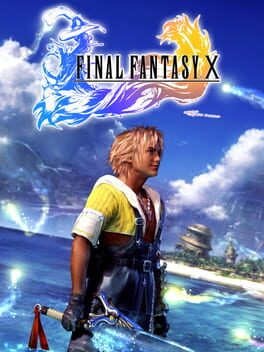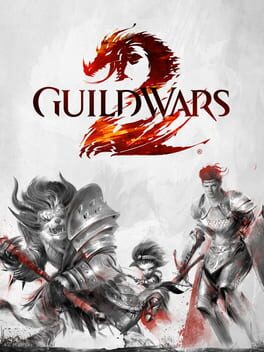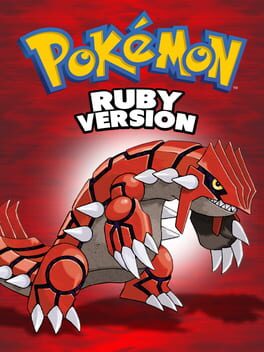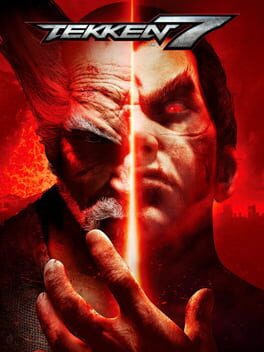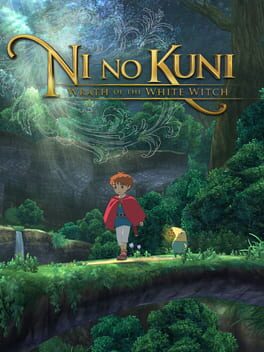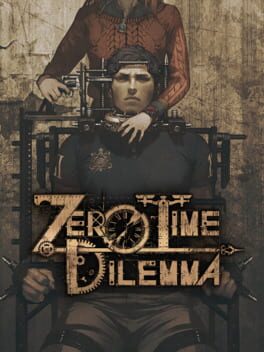BattleMarcIV
Bio
✨Writer who can never complete a game so long as he lives amen ✨🪽🦖🕹️
✨Writer who can never complete a game so long as he lives amen ✨🪽🦖🕹️
Badges

Best Friends
Become mutual friends with at least 3 others

Noticed
Gained 3+ followers

N00b
Played 100+ games
Favorite Games
221
Total Games Played
003
Played in 2024
024
Games Backloggd
Recently Played See More
Recently Reviewed See More
RAPID REVIEW💨
I put my stock in futures, but not yours kid.
► Hi-Fi Rush pulses with an engaging mix of rhythm & platformer-esque elements. Its comic book visuals, cheeky sense of humour and classic rock soundtrack are fun in isolation, but together strum a few bum notes. There's a high level of craftsmanship here that is sometimes undermined by its lack of a cohesive individual identity.
Breakdown🤘 🎸
REVIEW IN PROGRESS
► Narrative👨🎤
- There's not much new here, narratively. Evil Corporation is Evil Corporation. Vandelay appear evil from the get go, and their true plans are revealed early on. There's no unique twist that you don't see coming from a mile off, but there's a strength to this predictability too. Classics are a classic for a reason, and they have plenty of real world material to play with.
- There's not enough time spent outside of the Vandelay organisation to inspire us to fight against them, nor any time getting to know other people who have underwent Vandelay surgical enhancement.
- The main villains representing a different section of game development and other tech organisations was what spurred me on gameplay wise. Production forcing out deadlines at the expense of worker health, Design constantly changing their minds about what they want no matter the financial cost, Marketing spending all their money on vanity projects instead of the main product itself and Finance narrow-mindedly being concerned with profit as the be all and end all are all funny, and how that is shown is quite funny.
- Structurally, knowing you have a cast of bosses to fight against is a fun way to structure the story, and the game changes just how you fight each boss to break up the storybeats and make them feel less by the book.
- Kale's motivation is boring and threadbare. We aren't convinced of his villainous intent at any point in the game beyond Evil for Evil's Sake.
- Game doesn't criticise enough of the structures that pump out villains like Kale. He's seen as a unique bad actor instead of emblematic of wider issues in the game's world. There's Good Capitalism and Bad Capitalism and the villains are painted as incompetent buffoons. Understandable, but a layer of insidiousness would've sold their motivations more. The unseriousness undermined the seriousness of their real-world counterparts.
- The game's sense of humour was very grating. "Well that just happened" moments happen again and again and humanise the villains in boring ways. Slapstick is good to break up serious moments, but the game as a whole lacked sincerity and undermined its own message.
- Wish there had been more said about the usefulness of tech and useless tech "growth".
- Collecting most of the flavour of the world from journal entries is a little unsatisfying but could be very funny at times. Anyone who has spent any time inside a corporation will be VERY familiar with all the personalities tied into the e-mail chains.
► Audio🎧
- Rock soundtrack doesn't go with the visuals of the game. Comic Book + Rock songs reminiscent of Scott Pilgrim, but lacks the grimier edge to sell us on the characterisation.
- Game takes painful lengths to encourage you to find the beat, but then doesn't put the start up animations for Chai on beat, leading to confusion. Player is simultaneously encouraged to look and not look at Chai for cues.
- Rock soundtrack is meant to be "punk" but doesn't go beyond a classic sound or experiment with it's palettes and structure. Similarly, villain character themes use the same instrumentation as the "punk" characters leading to very little difference between Vandelay and Anti-Vandelay sonics. Missed opportunity!
- Audio is cleverly deployed and designed. It doesn't "ruin" the song when you don't land perfect hits in combos, but it does add some additional spice to the tracks if you do. Soundtrack is clever to place more user-interactive sounds inside a music structurally it can't deviate from.
- Licensed music was used poorly. For a game so reliant and celebratory of the power of music, using licensed music felt cowardly and "corporate" instead of relying on its own sonic identity.
► Visuals⚙️
- The comic book visuals are fun and vibrant.
- Design wise, the villains appear to be more carefully thought out than our main cast who lack a little identity. Chai himself pulls elements from the likes of Scott Pilgrim and Tetsuo from Akira, but as a personality doesn't deliver any of the grit.
-Approaches tech visually in a similar way to the likes of Ratchet and Clank which works for its blunt comedic style.
- Sleek utopian visuals seems to have not really considered the soundtrack very much and at times seems totally at odds with it.
- Environments are fun to look at, and the way they pulse on the beat is clever even if it doesn't really make much in-game sense.
- Wish there was more different types of enviroments like the lava level, just broke up what is otherwise a very repetitive world to explore.
► Gameplay🎯
- The combat system draws from the likes of Devil May Cry and Bayonetta, mixed in with a bit of rhythm game classics like Taiko, DDR and Guitar Hero. They try their best to encourage you to use a wide range of different combos etc, but you don't really need anything more than your basic tools to succeed. There's a lot of bloat, but that might appeal to people who would be more creative with their combat.
- Lots of areas blocked off by character unlocks until end-game to encourage replayability. There's not much narratively locked behind the SPECTRA doors, but for people looking a more punishing experience there's plenty here.
- Game is a great length, enough to get a feed from but not brutally long. Paced well. Types of gameplay (2D platformer, 3D platformer, arena combat, boss fights) are paced out well to knock you out of predictable rhythms and keep you engaged.
- Landing combos and perfectly timed hits is VERY satisfying, and the characters jumping in to use moves to help out is a good way to use an ensemble cast.
- Types of enemies and how to defeat them were interesting and varied. Switched up what it tested you on and how to succeed. Some would be easily beatable by staying airbourne for as long as possible however. Felt a little overtuned.
- There's a LOT of collectables, but the game didn't really inspire me with many rewards of encouragement to engage with them.
► Final Thoughts🤖
Hi-Fi Rush's inspirations are clear and numerous, but it doesn't bring enough of its own spirit to the table to sell it as a fresh experience. There's lots of charm here, and is competently developed and concepted, it just lacks a little vision which is a shame considering some of its narrative beats.
You've got a killer track, but all songs have to end!
I put my stock in futures, but not yours kid.
► Hi-Fi Rush pulses with an engaging mix of rhythm & platformer-esque elements. Its comic book visuals, cheeky sense of humour and classic rock soundtrack are fun in isolation, but together strum a few bum notes. There's a high level of craftsmanship here that is sometimes undermined by its lack of a cohesive individual identity.
Breakdown🤘 🎸
REVIEW IN PROGRESS
► Narrative👨🎤
- There's not much new here, narratively. Evil Corporation is Evil Corporation. Vandelay appear evil from the get go, and their true plans are revealed early on. There's no unique twist that you don't see coming from a mile off, but there's a strength to this predictability too. Classics are a classic for a reason, and they have plenty of real world material to play with.
- There's not enough time spent outside of the Vandelay organisation to inspire us to fight against them, nor any time getting to know other people who have underwent Vandelay surgical enhancement.
- The main villains representing a different section of game development and other tech organisations was what spurred me on gameplay wise. Production forcing out deadlines at the expense of worker health, Design constantly changing their minds about what they want no matter the financial cost, Marketing spending all their money on vanity projects instead of the main product itself and Finance narrow-mindedly being concerned with profit as the be all and end all are all funny, and how that is shown is quite funny.
- Structurally, knowing you have a cast of bosses to fight against is a fun way to structure the story, and the game changes just how you fight each boss to break up the storybeats and make them feel less by the book.
- Kale's motivation is boring and threadbare. We aren't convinced of his villainous intent at any point in the game beyond Evil for Evil's Sake.
- Game doesn't criticise enough of the structures that pump out villains like Kale. He's seen as a unique bad actor instead of emblematic of wider issues in the game's world. There's Good Capitalism and Bad Capitalism and the villains are painted as incompetent buffoons. Understandable, but a layer of insidiousness would've sold their motivations more. The unseriousness undermined the seriousness of their real-world counterparts.
- The game's sense of humour was very grating. "Well that just happened" moments happen again and again and humanise the villains in boring ways. Slapstick is good to break up serious moments, but the game as a whole lacked sincerity and undermined its own message.
- Wish there had been more said about the usefulness of tech and useless tech "growth".
- Collecting most of the flavour of the world from journal entries is a little unsatisfying but could be very funny at times. Anyone who has spent any time inside a corporation will be VERY familiar with all the personalities tied into the e-mail chains.
► Audio🎧
- Rock soundtrack doesn't go with the visuals of the game. Comic Book + Rock songs reminiscent of Scott Pilgrim, but lacks the grimier edge to sell us on the characterisation.
- Game takes painful lengths to encourage you to find the beat, but then doesn't put the start up animations for Chai on beat, leading to confusion. Player is simultaneously encouraged to look and not look at Chai for cues.
- Rock soundtrack is meant to be "punk" but doesn't go beyond a classic sound or experiment with it's palettes and structure. Similarly, villain character themes use the same instrumentation as the "punk" characters leading to very little difference between Vandelay and Anti-Vandelay sonics. Missed opportunity!
- Audio is cleverly deployed and designed. It doesn't "ruin" the song when you don't land perfect hits in combos, but it does add some additional spice to the tracks if you do. Soundtrack is clever to place more user-interactive sounds inside a music structurally it can't deviate from.
- Licensed music was used poorly. For a game so reliant and celebratory of the power of music, using licensed music felt cowardly and "corporate" instead of relying on its own sonic identity.
► Visuals⚙️
- The comic book visuals are fun and vibrant.
- Design wise, the villains appear to be more carefully thought out than our main cast who lack a little identity. Chai himself pulls elements from the likes of Scott Pilgrim and Tetsuo from Akira, but as a personality doesn't deliver any of the grit.
-Approaches tech visually in a similar way to the likes of Ratchet and Clank which works for its blunt comedic style.
- Sleek utopian visuals seems to have not really considered the soundtrack very much and at times seems totally at odds with it.
- Environments are fun to look at, and the way they pulse on the beat is clever even if it doesn't really make much in-game sense.
- Wish there was more different types of enviroments like the lava level, just broke up what is otherwise a very repetitive world to explore.
► Gameplay🎯
- The combat system draws from the likes of Devil May Cry and Bayonetta, mixed in with a bit of rhythm game classics like Taiko, DDR and Guitar Hero. They try their best to encourage you to use a wide range of different combos etc, but you don't really need anything more than your basic tools to succeed. There's a lot of bloat, but that might appeal to people who would be more creative with their combat.
- Lots of areas blocked off by character unlocks until end-game to encourage replayability. There's not much narratively locked behind the SPECTRA doors, but for people looking a more punishing experience there's plenty here.
- Game is a great length, enough to get a feed from but not brutally long. Paced well. Types of gameplay (2D platformer, 3D platformer, arena combat, boss fights) are paced out well to knock you out of predictable rhythms and keep you engaged.
- Landing combos and perfectly timed hits is VERY satisfying, and the characters jumping in to use moves to help out is a good way to use an ensemble cast.
- Types of enemies and how to defeat them were interesting and varied. Switched up what it tested you on and how to succeed. Some would be easily beatable by staying airbourne for as long as possible however. Felt a little overtuned.
- There's a LOT of collectables, but the game didn't really inspire me with many rewards of encouragement to engage with them.
► Final Thoughts🤖
Hi-Fi Rush's inspirations are clear and numerous, but it doesn't bring enough of its own spirit to the table to sell it as a fresh experience. There's lots of charm here, and is competently developed and concepted, it just lacks a little vision which is a shame considering some of its narrative beats.
You've got a killer track, but all songs have to end!
RAPID REVIEW💨
Mors certa, hora incerta
► Time Dilemma is the most ambitious in the Zero Escape series to date. Its intricate narrative treads similar ground to 999 and Virtue's Last Reward that fans of the series are sure to love, but at times ZTD can't seem to escape its own labyrinthine constructions...
B-B-B-Breakdown 🕵️♂️
► Narrative🪓
Fans of Uchikoshi will find themes in Zero Time Dilemma they've come to adore. Morphogenetic fields, The Monty Hall Problem, and The Sleeping Beauty Paradox all make appearances, as do time machines, world eradicating viruses and serial killers. At roughly 20 hours of gameplay, ZTD ends with more loose ends than it tidies, tackling the more complex narrative questions but leaving the simple left unsaid. The game itself is so preoccupied with impressing us with its complex structure that the treatment of characters like those on Q team, (Mira, Eric and Q), are notably absent of a satisfying motivation by the Endgame. Believability is, obviously, thankfully, left at the door when you start any Zero Escape game, and because of this they're able to sink you deeper and deeper into their unique worldbuilding. Even then, Zero Time Dilemma presents us characters who turn their personalities on a dime in order to fulfill narrative goals or provide red herrings, neither of which ever really land on their feet.
► Audio🔪
Perhaps one of the most frustrating aspects of Zero Time Dilemma is the audio mixing. The game is reliant on its eerie, mechanical music gelling with some of the incredible voice acting talent, but the highs of both are undermined by some choice audio mixing. There's an option in-game to change these manually, but losing key audio in early game moments is disappointing. In general, the music sells the "underground bunker" environment, and appropriately guides the player through the emotional moments. The voice cast supports this by cutting through the wooden character models to breathe humanity back into the experience.
► Visuals🩸
The change to 3D was met with some pushback from Zero Escape fans and it's easy to see why. The 2D character sprites of 999 cut the shape of a diverse cast with bright colours and unique silhouettes which started us on our Zero Escape love affair. 2D artwork is of course a staple of visual novels, but the 2D models of 999 and the more basic 3D models of VLR were perhaps usurped by the siren call of the new uncanny valley sprites in ZTD in an attempt to modernise. Writing this in 2024, there's going to naturally be an issue with dated graphics, but comparing it to the previous two games in the series, it's a notable downgrade in charm and polish, both in character sprites and environments.
► Gameplay⚰️
Time Dilemma's pacing issues have similar resonance in its gameplay. Most of the puzzle rooms take roughly 15 minutes, and are somewhat routine. Once you figure out the first piece of the puzzle, the rest will be a case of following the thread to the next puzzle in the queue. The most challenging were mathematics based, and their difficulty came from the intricacies of their calculations, rather than any sort of complex logical thinking involved. Choosing between two (or more!) narrative options and potentially altering the future was initially very fun, but as the impressive story threads became more interlocked with this mechanic, it became apparent that at some point you would end up having to see every option anyway, which undermined the stakes of your decisions as the game progressed. Unfortunately, it's a puzzle that's baked into the game design of Zero Time Dilemma that couldn't be solved with some clever thinking alone.
► Final Thoughts⏲
I had a great time with Zero Time Dilemma as a massive fan of previous works in the series and also as a writer. Uchikoshi throws away all decorum and unleashes himself in this iteration which is just a joy to watch. Technically speaking, he is what can only be described as a master of plot structure, but loses softer moments of characterisation to enact ungraceful lore dumps. This isn't Uchikoshi at his pinnacle, but fans of his works have come to learn the fun is in getting battered and bruised in the many paths he winds for us, not in leaving through the X door totally unscathed.
Plaudite, acta est fabula.
Mors certa, hora incerta
► Time Dilemma is the most ambitious in the Zero Escape series to date. Its intricate narrative treads similar ground to 999 and Virtue's Last Reward that fans of the series are sure to love, but at times ZTD can't seem to escape its own labyrinthine constructions...
B-B-B-Breakdown 🕵️♂️
► Narrative🪓
Fans of Uchikoshi will find themes in Zero Time Dilemma they've come to adore. Morphogenetic fields, The Monty Hall Problem, and The Sleeping Beauty Paradox all make appearances, as do time machines, world eradicating viruses and serial killers. At roughly 20 hours of gameplay, ZTD ends with more loose ends than it tidies, tackling the more complex narrative questions but leaving the simple left unsaid. The game itself is so preoccupied with impressing us with its complex structure that the treatment of characters like those on Q team, (Mira, Eric and Q), are notably absent of a satisfying motivation by the Endgame. Believability is, obviously, thankfully, left at the door when you start any Zero Escape game, and because of this they're able to sink you deeper and deeper into their unique worldbuilding. Even then, Zero Time Dilemma presents us characters who turn their personalities on a dime in order to fulfill narrative goals or provide red herrings, neither of which ever really land on their feet.
► Audio🔪
Perhaps one of the most frustrating aspects of Zero Time Dilemma is the audio mixing. The game is reliant on its eerie, mechanical music gelling with some of the incredible voice acting talent, but the highs of both are undermined by some choice audio mixing. There's an option in-game to change these manually, but losing key audio in early game moments is disappointing. In general, the music sells the "underground bunker" environment, and appropriately guides the player through the emotional moments. The voice cast supports this by cutting through the wooden character models to breathe humanity back into the experience.
► Visuals🩸
The change to 3D was met with some pushback from Zero Escape fans and it's easy to see why. The 2D character sprites of 999 cut the shape of a diverse cast with bright colours and unique silhouettes which started us on our Zero Escape love affair. 2D artwork is of course a staple of visual novels, but the 2D models of 999 and the more basic 3D models of VLR were perhaps usurped by the siren call of the new uncanny valley sprites in ZTD in an attempt to modernise. Writing this in 2024, there's going to naturally be an issue with dated graphics, but comparing it to the previous two games in the series, it's a notable downgrade in charm and polish, both in character sprites and environments.
► Gameplay⚰️
Time Dilemma's pacing issues have similar resonance in its gameplay. Most of the puzzle rooms take roughly 15 minutes, and are somewhat routine. Once you figure out the first piece of the puzzle, the rest will be a case of following the thread to the next puzzle in the queue. The most challenging were mathematics based, and their difficulty came from the intricacies of their calculations, rather than any sort of complex logical thinking involved. Choosing between two (or more!) narrative options and potentially altering the future was initially very fun, but as the impressive story threads became more interlocked with this mechanic, it became apparent that at some point you would end up having to see every option anyway, which undermined the stakes of your decisions as the game progressed. Unfortunately, it's a puzzle that's baked into the game design of Zero Time Dilemma that couldn't be solved with some clever thinking alone.
► Final Thoughts⏲
I had a great time with Zero Time Dilemma as a massive fan of previous works in the series and also as a writer. Uchikoshi throws away all decorum and unleashes himself in this iteration which is just a joy to watch. Technically speaking, he is what can only be described as a master of plot structure, but loses softer moments of characterisation to enact ungraceful lore dumps. This isn't Uchikoshi at his pinnacle, but fans of his works have come to learn the fun is in getting battered and bruised in the many paths he winds for us, not in leaving through the X door totally unscathed.
Plaudite, acta est fabula.
